 I learned about the Caterpillar Club when I interviewed some flying WASPs—not the kind that buzz around on tiny wings. These WASPs were airplane pilots, the first women to fly for the United States military. They served during World War II: the Women Airforce Service Pilots (or WASP, for short). The Caterpillar Club they told me about was named for silkworm caterpillars that helped save pilots’ lives. If a plane developed engine trouble in midair, pilots could float to safety by using a parachute made from silk, a lightweight cloth that silkworm caterpillars help create. These caterpillars use a spit-like substance in their mouths to spin a long silk thread that they wrap around themselves, forming a cocoon that they live in for several weeks until they become moths. Those long silk threads can then be unwound from the cocoons and woven together to make silk cloth. About twenty years before World War II, a parachute company started the Caterpillar Club for people whose lives were saved by using a parachute to escape from a disabled plane. People could write to the company about their parachute rescue, pay a membership fee, and the company would send them a little caterpillar pin. However, the WASP pilots I spoke with said that some pilots liked to feel they were part of the Caterpillar Club even if it wasn’t an aircraft’s fault that led them to use a parachute. During World War II, pilots—both men and women—trained to fly military aircraft for the Army in small open planes. The planes didn’t have a roof. If a nervous pilot-in-training forgot to buckle the seat belt and the plane tipped over, the pilot could fall out! Fortunately, they always wore a parachute. Landing safely—thanks to the parachute—not only let them feel part of the Caterpillar Club, but also helped the students remember to never, ever forget to buckle up again. However, by World War II, many parachutes used by U.S. pilots weren’t made of silk. The silk-producing areas of the world were controlled then by Japan, which the U.S. was fighting in this war. Because U.S. companies could no longer get silk cloth, they began making parachutes from a new material scientists had just invented—nylon. Most parachutes are made of nylon today. Even so, the Caterpillar Club lives on. Click here for source notes on this article. 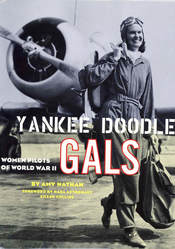 If you are interested in finding out more about the WASPs, Amy Nathan has written a book on the subject. Through firsthand accounts, she tells how these early pilots they test-flew newly repaired aircraft, dragged banners behind their planes so male trainees could practice shooting moving targets with live ammunition (!), and ferried all kinds of aircraft from factories to military bases. Yankee Doodle Gals will give you a new look at World War II and show you just how dramatically society has changed since then. Click here for more information. MLA 8 Citation
Nathan, Amy. "Caterpillars to the Rescue." Nonfiction Minute, iNK Think Tank, 20 Mar. 2018, www.nonfictionminute.org/the-nonfiction-minute/ Caterpillars-to-the-Rescue.
0 Comments
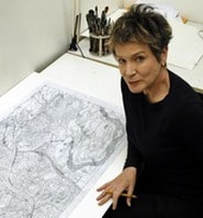 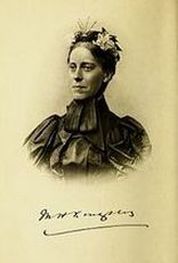 “It is at these times you realize the blessing of a good, thick skirt,” said Mary Kingsley after she crashed into a cleverly concealed leopard pit lined with twelve-inch ivory spikes. The year was 1895, the place Equatorial West Africa, and the spunky lady saved, thanks to her observance to the dress code of the day, was a young Englishwoman collecting species of fish and beetles for the British Museum. Mary Kingsley was the daughter of a physician who spent most of his time traveling. Although she received no formal education (reserved for her brother Charles), Mary learned to read, becoming fascinated with subjects such as science, exploration and piracy. At one point she was granted permission to teach herself German, but only after she could iron a shirt properly. Mary learned chemistry, experimented with gunpowder and electricity, and became engrossed by the intricacies of plumbing. After years of caring for her invalid mother, in 1892 both her parents died. With the small inheritance left to her came the fulfillment of a dream: to explore West Africa. When Mary crashed into the leopard pit, she was traveling in what was then the French Congo, getting to know the Fangs, reportedly a tribe of cannibals. Traveling by canoe, she was once marooned in a crocodile-infested lagoon. When one tried to climb aboard, she was there with a paddle, ready to “fetch him a clip on the snout.” After two trips, she wrote a book called Travels in West Africa. She became a sought-after lecturer and celebrity. In public appearances she was both funny and serious, peppering her narrative with jokes, often at her own expense, but also being critical of the way the British had steamrolled into the African continent, with little regard for its ancient cultures. In 1900 she sailed to Africa for the third time, responding to an urgent call for nurses in South Africa, where war was underway. Assigned to a hospital where hundreds of soldiers were dying from a raging epidemic, she became ill herself, and died two months later. She was buried at sea with military honor. In her book, she remembers: “Indeed, much as I have enjoyed life in Africa, I do not think I ever enjoyed it to the full as I did when dropping down the Rembwe… Ah me! Give me a West African river and a canoe for sheer pleasure.” 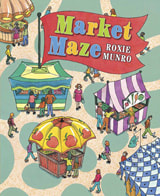 Rave reviews for Roxie Munro's book Market Maze: "A great way to introduce kids to their foods' origins and to prepare them for a greenmarket visit of their own." Kirkus (Starred review!) excerpt. "From a parent’s or teacher’s point of view, here’s a good way for kids to gain the visual discrimination skills needed for reading, while they learn about the sources of food at their local farmers’ markets. For kids, though, the combination of mazes and hidden objects is just plain fun. It’s a winning combination." Booklist review excerpt. Roxie Munro is a member of iNK's Authors on Call so you can meet her face-to-race through interactive videoconferencing. Learn more about her programs here. MLA 8 Citation
Munro, Roxie. "Mary Kingsley." Nonfiction Minute, iNK Think Tank, 15 Mar. 2018, www.nonfictionminute.org/the-nonfiction-minute/Mary-Kingsley. 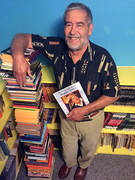 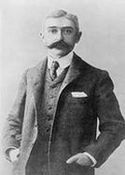 Baron Pierre de Coubertin Baron Pierre de Coubertin French aristocrat Baron Pierre de Coubertin (1863–1937) was a scholar of ancient Greece. With the sting of France’s defeat in the Franco-Prussian War in 1871 in his mind, he believed that strong young men were better able to fight wars. He especially admired the English school system, in which academic learning and physical fitness worked side by side. His studies convinced him that this harmony of mind and body originated in the gymnasia of ancient Greece. This harmony reached its highest level in the Olympics, which originated in the Greek village of Olympia in 776 BCE. They continued every four years until being suppressed in 393 CE as a pagan ritual. The Games began with a single event—a sprint of about 200 yards—and eventually encompassed a wide variety of sports. The Games were so prestigious among the Greeks that winners were set up for the rest of their lives. To reintroduce this sporting ideal into the modern world, de Coubertin proposed reviving the Olympics. Olympia was too small and too remote to serve as the site, so de Coubertin and his associates chose Athens, the Greek capital and largest city, instead. Two hundred forty one athletes from 14 nations descended on Athens in April 1896 to compete in nine sports: track and field, cycling, fencing, gymnastics, shooting, swimming, tennis, weightlifting, and wrestling. Only track and wrestling had been part of the ancient Olympics. Another event not in the original Games was the marathon run. Organizers wanted a signature event to recall the glory of ancient Greece. In 490 BCE, a messenger supposedly ran from the plain of Marathon to Athens to announce a stunning victory over a much larger invading Persian army. So the route of the first-ever “marathon race” was about 22 miles, from the battlefield to the Olympic Stadium. The winner, Spiridon Loues, had done no formal training. His occupation of water carrier in the hills overlooking Athens gave him considerable stamina and he became an instant national hero. A prominent Greek industrialist reportedly offered his daughter in marriage. Loues was already engaged. He settled for a horse and cart for his business instead. Today the Olympics are regarded as the premier sporting event in the world. In the 2012 Olympics in London, England, 10,768 athletes from 204 nations competed in 26 sports. Nearly 4,800 were women—something that never happened in the original Olympics. All the entrants then were men. 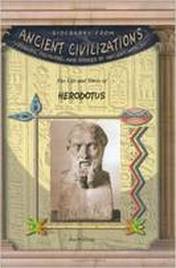 Jim Whiting has written a book on the ancient Greek writer Herodotus, who is known as the father of history. Herodotus provides most of what is known about one of the most important periods in world history. It began in 490 BCE. An invading Persian army was defeated at the Battle of Marathon. It concluded just over ten years later with Greek victories at Salamis and Plataea. The triumph allowed the Greeks to develop ideas and institutions in politics, economics, science, and even sports. These are the bases for how the Western world thinks and acts today. For more information, click here. MLA 8 Citation
Whiting, Jim. "Reviving the Olympics." Nonfiction Minute, iNK Think Tank, 20 Feb. 2018, www.nonfictionminute.org/the-nonfiction-minute/ reviving-the-olympics. |
*NEWS
|
For Vicki Cobb's BLOG (nonfiction book reviews, info on education, more), click here: Vicki's Blog
The NCSS-CBC Notable Social Studies Committee is pleased to inform you
that 30 People Who Changed the World has been selected for Notable Social Studies Trade Books for Young People 2018, a cooperative project of the National Council for the Social Studies (NCSS) & the Children’s Book Council
Categories
All
Abolitionists
Adams Janus
Adaptation
Adaptations
Adkins Jan
Advertising
Aerodynamics
Africa
African American History
African Americans
Africa West
Agriculture
Aircraft
Air Pilots
Air Pressure
Air Travel
Albee Sarah
Alchemy
Alligators
Allusion
American History
American Icons
Amphibians
Amundsen Roald
Anatomy
Ancient
Ancient Cultures
Anderson Marian 1897-1993
Animal Behavior
Animal Experimentation
Animal Intelligence
Animals
Animation
Antarctica
Ants
Apache Indians
Apes
April Fool's Day
Architecture
Argument
Arithmetic
Art
Art Deco
Artists
Arts
Asia
Astronauts
Astronomy
Athletes
Atomic Theory
Audubon Societies
Authors
Autobiography
Automobiles
Aviation
Awards
Bacteria
Baseball
Battuta Ibn
Bears
Beatles
Beavers
Bees
Biodegradation
Biography
Biology
Biomes
Biomimicry
Biplanes
Birds
Black Death
Black History
Blindness
Blizzards
Bombs
Bonaparte Napoleon
Boone Daniel
Botany
Brazil
Bridges
Brill Marlene Targ
Brooklyn Bridge
Brown John
Buffaloes
Building Materials
Butterflies
Caesar
Caesar Julius
Caissons
Calculus
Calendars
Cannibal
Capitals
Caravaggio
Carbon Dioxide
Carnivores
Carson Mary Kay
Cartoons & Comics
Carving (Decorative Arts)
Cascade Range
Castaldo Nancy
Castles
Castrovilla Selene
Cathedrals
Cats
Caves
Celts
Cemeteries
Chemistry
Children's Authors
Child Welfare
China
Choctaw Indians
Christmas
Chronometers
Cicadas
Cinco De Mayo
Ciphers
Circle
Citizenship
Civil Rights
Civil Rights Movements
Civil War
Civil War - US
Climate
Climate Change
Clocks And Watches
Clouds
Cobb Vicki
COBOL (Computer Language)
Code And Cipher Stories
Collard III Sneed B.
Collectors And Collecting
Color
Commerce
Communication
Competition
Compilers
Composers
Computers
Congressional Gold Medal
Consitution
Contests
Contraltos
Coolidge Calvin
Cooling
Corms
Corn
Counterfeiters
Covid-19
Crocodiles
Cryptography
Culture
Darwin Charles
Declaration Of Independence
Decomposition
Decompression Sickness
Deep-sea Animals
Deer
De Medici Catherine
Design
Detectives
Dickens Charles
Disasters
Discrimination
Diseases
Disney Walt
DNA
Dogs
Dollar
Dolphins
Douglass Frederick 1818-1895
Droughts
Dr. Suess
Dunphy Madeleine
Ear
Earth
Earthquakes
Ecology
Economics
Ecosystem
Edison Thomas A
Education
Egypt
Eiffel-gustave-18321923
Eiffel-tower
Einstein-albert
Elephants
Elk
Emancipationproclamation
Endangered Species
Endangered-species
Energy
Engineering
England
Englishlanguage-arts
Entomology
Environmental-protection
Environmental-science
Equinox
Erie-canal
Etymology
Europe
European-history
Evolution
Experiments
Explorers
Explosions
Exports
Extinction
Extinction-biology
Eye
Fairs
Fawkes-guy
Federalgovernment
Film
Fires
Fishes
Flight
Floods
Flowers
Flute
Food
Food-chains
Foodpreservation
Foodsupply
Food-supply
Football
Forceandenergy
Force-and-energy
Forensicscienceandmedicine
Forensic Science And Medicine
Fossils
Foundlings
France
Francoprussian-war
Freedom
Freedomofspeech
French-revolution
Friction
Frogs
Frontier
Frontier-and-pioneer-life
Frozenfoods
Fugitiveslaves
Fultonrobert
Galapagos-islands
Galleys
Gametheory
Gaudi-antoni-18521926
Gender
Generals
Genes
Genetics
Geography
Geology
Geometry
Geysers
Ghosts
Giraffe
Glaciers
Glaucoma
Gliders-aeronautics
Global-warming
Gods-goddesses
Gold-mines-and-mining
Government
Grant-ulysses-s
Grasshoppers
Gravity
Great-britain
Great-depression
Greece
Greek-letters
Greenberg Jan
Hair
Halloween
Handel-george-frederic
Harness Cheryl
Harrison-john-16931776
Health-wellness
Hearing
Hearing-aids
Hearst-william-randolph
Henry-iv-king-of-england
Herbivores
Hip Hop
History
History-19th-century
History-france
History-world
Hitler-adolph
Hoaxes
Holidays
Hollihan Kerrie Logan
Homestead-law
Hopper-grace
Horses
Hot Air Balloons
Hot-air-balloons
Housing
Huguenots
Human Body
Hurricanes
Ice
Icebergs
Illustration
Imagery
Imhotep
Imperialism
Indian-code-talkers
Indonesia
Industrialization
Industrial-revolution
Inquisition
Insects
Insulation
Intelligence
Interstatecommerce
Interviewing
Inventions
Inventors
Irrational-numbers
Irrigation
Islands
Jacksonandrew
Jazz
Jeffersonthomas
Jefferson-thomas
Jemisonmae
Jenkins-steve
Jet-stream
Johnsonlyndonb
Jokes
Journalism
Keeling-charles-d
Kennedyjohnf
Kenya
Kidnapping
Kingmartinlutherjr19291968
Kingmartinlutherjr19291968d6528702d6
Kings-and-rulers
Kings Queens
Kings-queens
Koala
Labor
Labor Policy
Lafayette Marie Joseph Paul Yves Roch Gilbert Du Motier Marquis De 17571834
Landscapes
Languages-and-culture
Law-enforcement
Layfayette
Levers
Levinson Cynthia
Lewis And Clark Expedition (1804-1806)
Lewis Edmonia
Liberty
Lift (Aerodynamics)
Light
Lindbergh Charles
Liszt Franz
Literary Devices
Literature
Lizards
Longitude
Louis XIV King Of France
Lumber
Lunar Calendar
Lynching
Macaws
Madison-dolley
Madison-james
Madison-james
Mammals
Maneta-norman
Maneta-norman
Marathon-greece
Marine-biology
Marine-biology
Marines
Marsupials
Martial-arts
Marx-trish
Mass
Massachusetts-maritime-academy
Mass-media
Mastodons
Mathematics
May-day
Mcclafferty-carla-killough
Mcclafferty-carla-killough
Mckinley-william
Measurement
Mechanics
Media-literacy
Media-literacy
Medicine
Memoir
Memorial-day
Metaphor
Meteorology
Mexico
Mickey-mouse
Microscopy
Middle-west
Migration
Military
Miners
Mississippi
Molasses
Monarchy
Monsters
Montgomery
Montgomery-bus-boycott-19551956
Montgomery-heather-l
Monuments
Moon
Moran-thomas
Morsecode
Morsesamuel
Moss-marissa
Moss-marissa
Motion
Motion-pictures
Mummies
Munro-roxie
Munro-roxie
Musclestrength
Museums
Music
Muslims
Mythologygreek
Nanofibers
Nanotechnology
Nathan-amy
Nathan-amy
Nationalfootballleague
Nationalparksandreserves
Nativeamericans
Native-americans
Native-americans
Naturalhistory
Naturalists
Nature
Nauticalcharts
Nauticalinstruments
Navajoindians
Navigation
Navy
Ncaafootball
Nervoussystem
Newdeal19331939
Newman-aline
Newman-aline
Newton-isaac
New-york-city
Nobelprizewinners
Nomads
Nonfictionnarrative
Nutrition
Nylon
Nymphs-insects
Oaths Of Office
Occupations
Ocean
Ocean-liners
Olympics
Omnivores
Optics
Origami
Origin
Orphans
Ottomanempire
Painters
Painting
Paleontology
Pandemic
Paper-airplanes
Parksrosa19132005
Parrots
Passiveresistance
Patent Dorothy Hinshaw
Peerreview
Penguins
Persistence
Personalnarrative
Personification
Pets
Photography
Physics
Pi
Pigeons
Pilots
Pinkertonallan
Pirates
Plague
Plains
Plainsindians
Planets
Plantbreeding
Plants
Plastics
Poaching
Poetry
Poisons
Poland
Police
Political-parties
Pollen
Pollution
Polo-marco
Populism
Portraits
Predation
Predators
Presidentialmedaloffreedom
Presidents
Prey
Prey-predators
Prey-predators
Prime-meridian
Pringle Laurence
Prohibition
Proteins
Protestandsocialmovements
Protestants
Protestsongs
Punishment
Pyramids
Questioning
Radio
Railroad
Rainforests
Rappaport-doreen
Ratio
Reading
Realism
Recipes
Recycling
Refrigerators
Reich-susanna
Religion
Renaissance
Reproduction
Reptiles
Reservoirs
Rheumatoidarthritis
Rhythm-and-blues-music
Rice
Rivers
Roaringtwenties
Roosevelteleanor
Rooseveltfranklind
Roosevelt-franklin-d
Roosevelt-theodore
Running
Russia
Safety
Sanitation
Schwartz David M
Science
Scientificmethod
Scientists
Scottrobert
Sculpture
Sculpturegardens
Sea-level
Seals
Seals-animals
Secretariesofstate
Secretservice
Seeds
Segregation
Segregationineducation
Sensessensation
September11terroristattacks2001
Seuss
Sextant
Shackletonernest
Shawneeindians
Ships
Shortstories
Silkworms
Simple-machines
Singers
Siy Alexandra
Slavery
Smuggling
Snakes
Socialchange
Social-change
Socialjustice
Social-justice
Socialstudies
Social-studies
Social-studies
Sodhouses
Solarsystem
Sound
Southeast-asia
Soybean
Space Travelers
Spain
Speech
Speed
Spiders
Spies
Spiritualssongs
Sports
Sports-history
Sports-science
Spring
Squirrels
Statue-of-liberty
STEM
Storms
Strategy
Sugar
Sumatra
Summer
Superbowl
Surgery
Survival
Swanson-jennifer
Swinburne Stephen R.
Synthetic-drugs
Taiwan
Tardigrada
Tasmania
Tasmanian Devil
Tasmanian-devil
Technology
Tecumsehshawneechief
Telegraph-wireless
Temperature
Tennis
Terrorism
Thomas Peggy
Thompson Laurie Ann
Time
Titanic
Tombs
Tortoises
Towle Sarah
Transcontinental-flights
Transportation
Travel
Trees
Trung Sisters Rebellion
Tundra
Turnips
Turtles
Typhoons
Underground Railroad
Us-environmental-protection-agency
Us History
Us-history
Ushistoryrevolution
Us History Revolution
Us-history-war-of-1812
Us Presidents
Ussupremecourtlandmarkcases
Vacations
Vaccines
Vangoghvincent
Vegetables
Venom
Vietnam
Viruses
Visual-literacy
Volcanoes
Voting-rghts
War
Warne-kate
Warren Andrea
Washington-dc
Washington George
Water
Water-currents
Wax-figures
Weapons
Weather
Weatherford Carole Boston
Whiting Jim
Wildfires
Winds
Windsor-castle
Wolves
Woman In History
Women
Women Airforce Service Pilots
Women-airforce-service-pilots
Womeninhistory
Women In History
Women-in-science
Women's History
Womens-roles-through-history
Wonder
Woodson-carter-godwin-18751950
World-war-i
World War Ii
World-war-ii
Wright Brothers
Writing
Writing-skills
Wwi
Xrays
Yellowstone-national-park
Zaunders Bo
ArchivesMarch 2021
February 2021
January 2021
December 2020
November 2020
October 2020
September 2020
June 2020
May 2020
April 2020
March 2020
February 2020
January 2020
December 2019
October 2019
September 2019
August 2019
July 2019
May 2019
April 2019
March 2019
February 2019
January 2019
December 2018
November 2018
September 2018
June 2018
May 2018
April 2018
March 2018
February 2018
January 2018
December 2017
November 2017
October 2017
September 2017
March 2017
The NONFICTION MINUTE, Authors on Call, and. the iNK Books & Media Store are divisions of iNK THINK TANK INC.
a 501 (c) (3) nonprofit corporation. To return to the iNK Think Tank landing page click the icon or the link below. :
http://inkthinktank.org/
For more information or support, contact thoughts@inkthinktank.org
For Privacy Policy, go to
Privacy Policy
© COPYRIGHT the Nonfiction Minute 2020.
ALL RIGHTS RESERVED.
This site uses cookies to personalize your experience, analyze site usage, and offer tailored promotions. www.youronlinechoices.eu
Remind me later
Archives
March 2023
February 2023
January 2023
December 2022
November 2022
October 2022
September 2022
June 2022
May 2022
April 2022
March 2022
February 2022
January 2022
December 2021
November 2021
September 2021
April 2021
March 2021
February 2021
November 2020
October 2020
September 2020
June 2020
May 2020
April 2020
March 2020
February 2020
January 2020
October 2019
August 2019
July 2019
May 2019
April 2019
December 2018
September 2018
June 2018
May 2018
March 2018
February 2018
January 2018
December 2017
November 2017
October 2017
September 2017


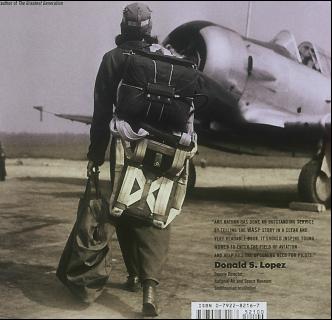


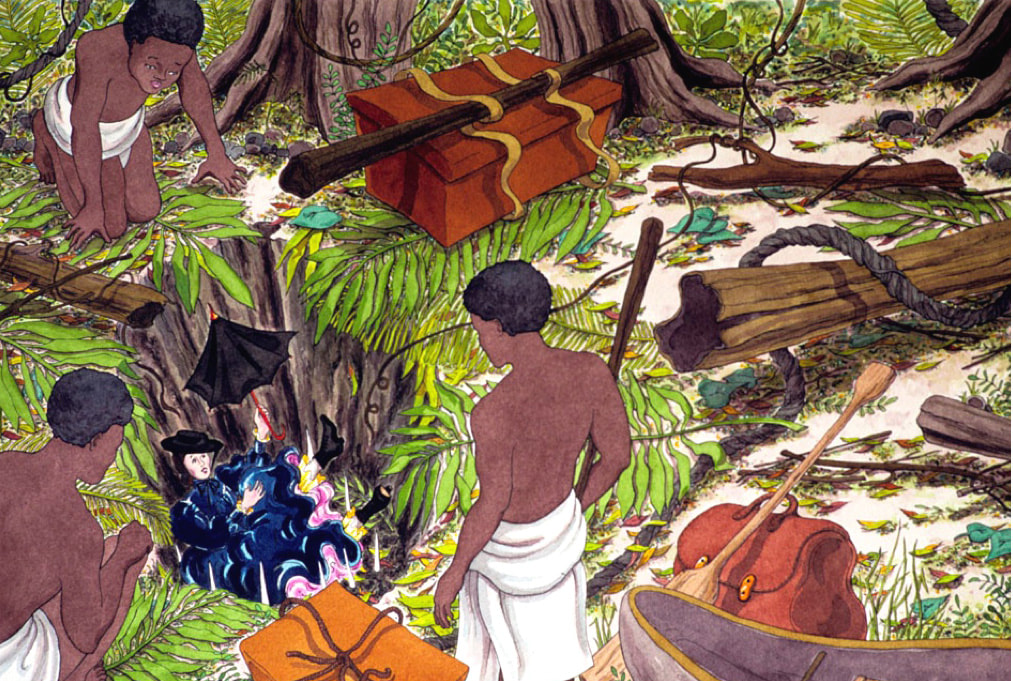
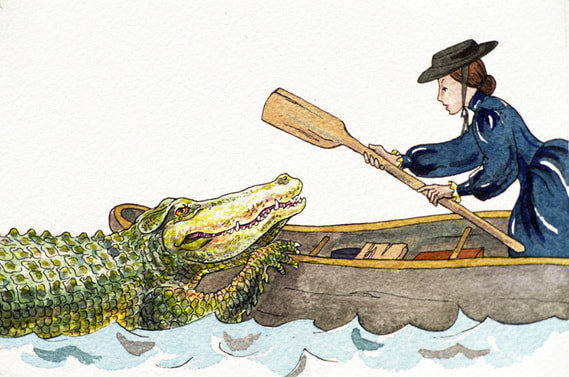
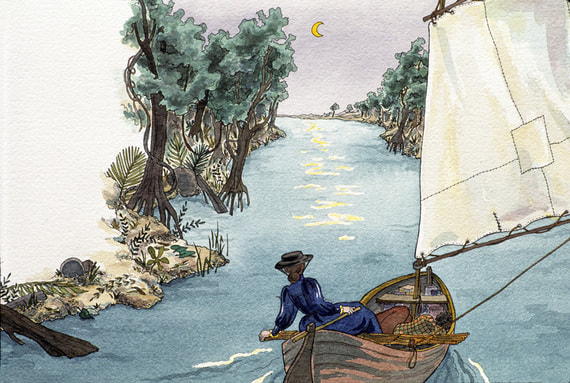


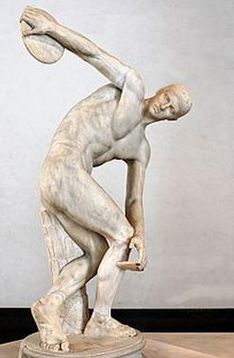
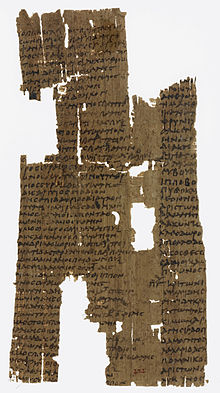
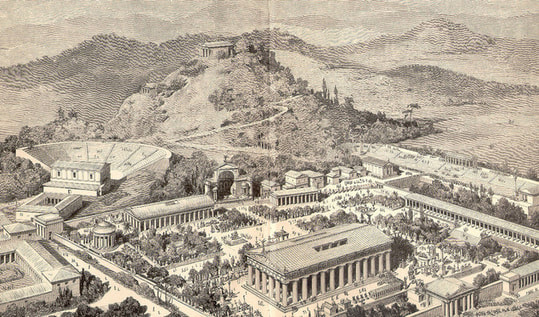
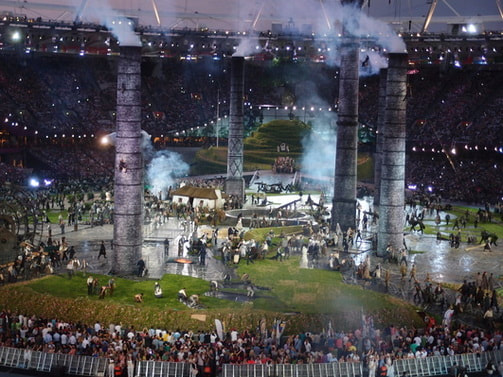

 RSS Feed
RSS Feed
